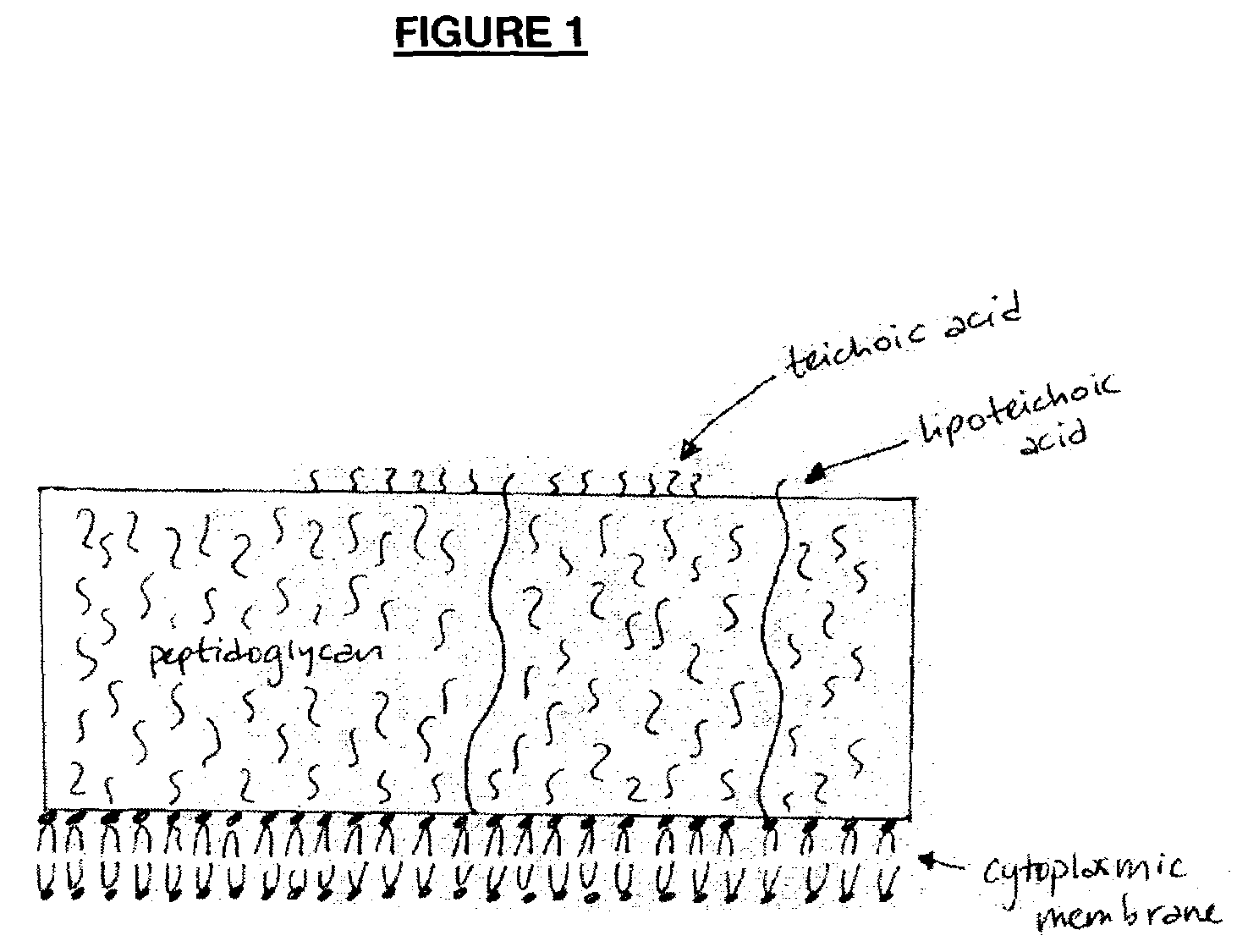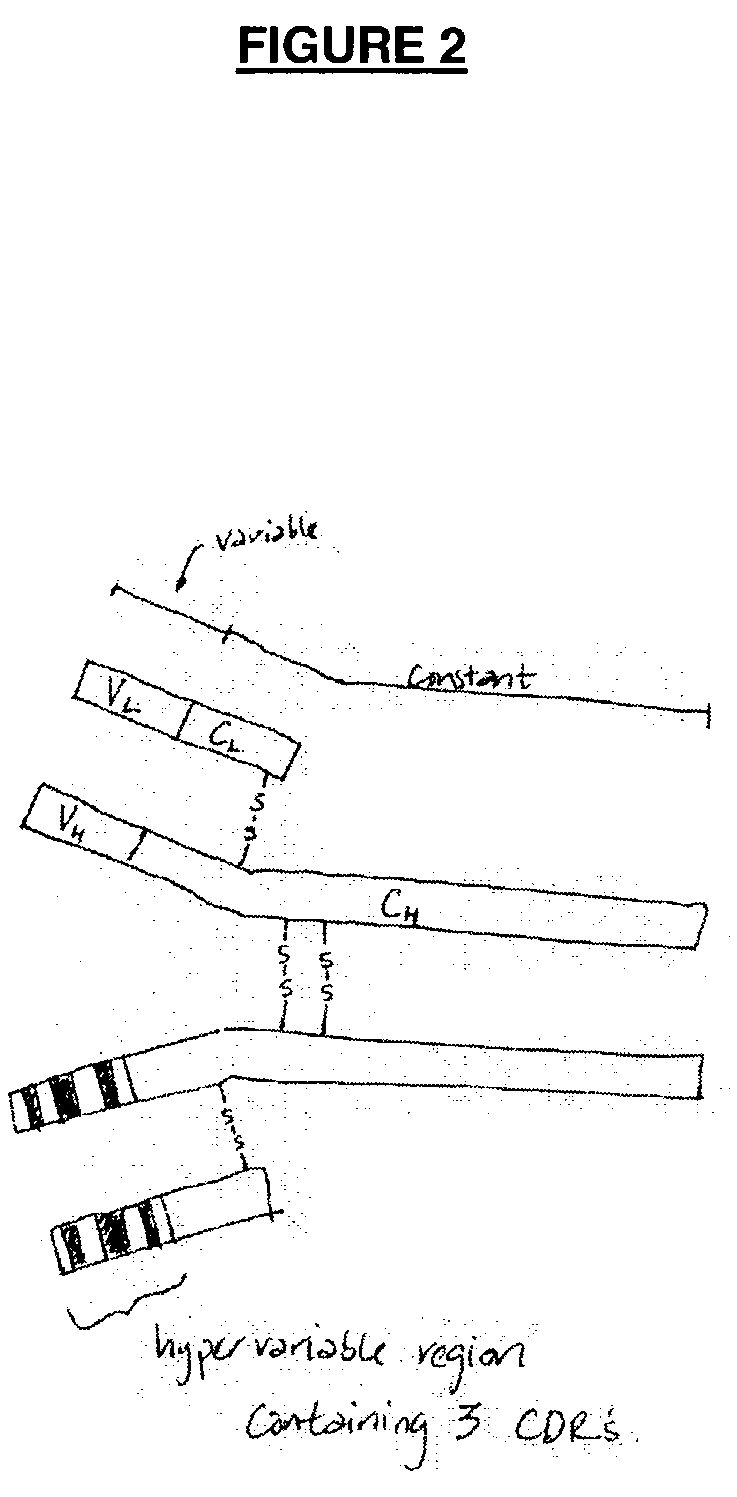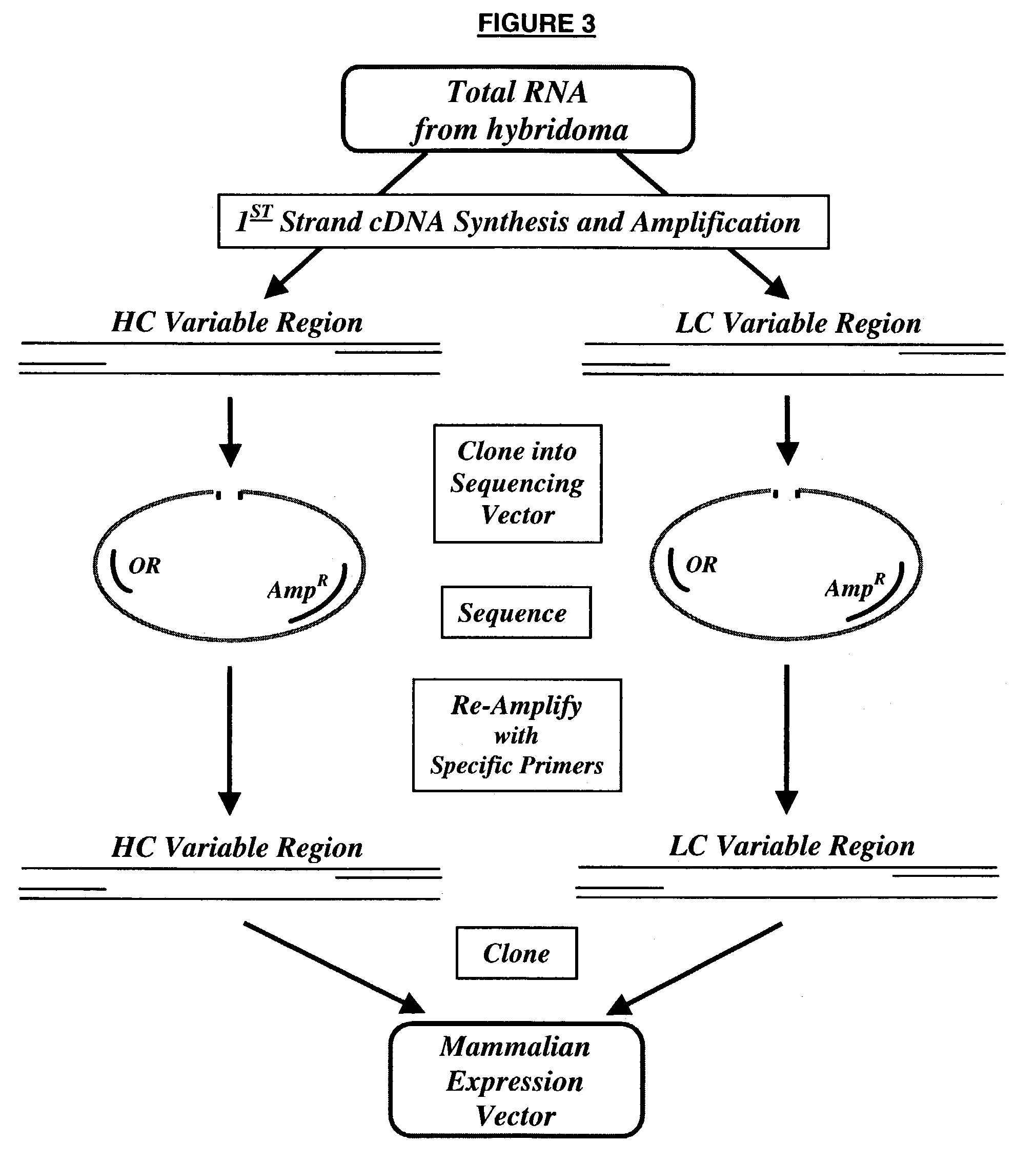Opsonic monoclonal and chimeric antibodies specific for lipoteichoic acid of Gram positive bacteria
a technology of lipoteichoic acid and gram positive bacteria, applied in the field of immunology and infectious diseases, can solve the problems of increasing development, staphylococci /i> are particularly worrisome, and the search for agents to combat bacterial infections is long and arduous, and achieves enhanced phagocytosis and killing of bacteria, enhanced protection from lethal infection, and high degree of sequence homology
- Summary
- Abstract
- Description
- Claims
- Application Information
AI Technical Summary
Benefits of technology
Problems solved by technology
Method used
Image
Examples
example 1
The Production of Hybridomas and Monoclonal Antibodies
[0125]Antibodies were raised against lipoteichoic acid (LTA) from S. aureus by immunizing mice with an LTA conjugate. LTA conjugates LTA / PspA, LTA / SIA / TT, and LTA / GMBS / TT, prepared as set forth below, were used.
[0126]To prepare each conjugate, LTA was first derivatized with thiol groups as follows. S. aureus LTA (Sigma Chemical Co.) was purified essentially as described in Fischer et al. (9). The purified LTA was diluted to 4 mg / ml with water. One hundred microliters of 0.75 M HEPES, 10 mM EDTA, pH 7.5 and 100 μl of 0.1 M SPDP (Pierce) were added to 1 ml of S. aureus LTA. The reaction was incubated for 4 hours at room temperature, and then 55 μl of 0.5 M DTT was added and the solution was dialyzed overnight at 4° C. against 2 mM EDTA, pH 5 (2×1 L). The reaction resulted in 0.27 mM thiol (LTA-SH) in a 1.2 mL volume, or 0.32 μmol thiol, as determined by DTNB assay (2).
[0127]LTA / PspA conjugate was prepared as follows. Three milligra...
example 2
Opsonic Activity of M120
[0149]Opsonic assays were carried out substantially as described above under the heading “Neutrophil-mediated Opsonophagocytic Bacteriacidal Assay”. M120 was purified from ascites essentially as described by the manufacturer of MEP Hypercel gel (BiSepra). Thirty-three ml of buffer A (50 mM Tris, 5 mM EDTA, pH 8) was added to 17 ml of mouse ascites, and then centrifuged for 15 minutes at 4000 rpm in an Eppendorf model 581 OR centrifuge using rotor A462. The solution was filtered using Whatman GD / XP PES 0.45μ membrane (cat. no. 6994-2504) and the volume of diluted ascites was 47 ml after filtering. The solution was loaded onto a 1 cm×7 cm MEP hypercel column that had been equilibrated with buffer A, at a rate of 1.8 ml / min. The column was washed with buffer A, and then with buffer A+25 mM sodium caprylate until the OD280 was 280280, pool A contained 3.2 mg / ml antibody, and pool B contained 0.25 mg / ml antibody.
[0150]First, the opsonic activity of M120 was determ...
example 3
Cloning of the M120 Variable Regions
[0156]Total RNA was isolated from 4×106 frozen 00-107 GG12 ID12 hybridoma cells using the Midi RNA Isolation kit (Qiagen) following the manufacturer's procedure. The RNA was dissolved in 10 mM Tris, 0.1 mM EDTA (pH 8.4) containing 0.03U / μg Prime RNase Inhibitor (Sigma) to a final concentration of 0.25 μg / μl.
[0157]FIG. 3 shows the strategy for cloning the variable region genes. The total RNA (2 μg) was converted to cDNA by using Superscript II-MMLV Reverse Transcriptase (Life Technologies) and mouse Kappa chain-specific primer (JSBX-18; SEQ ID NO: 5) and a mouse heavy chain-specific primer (JSBX-25A; SEQ ID NO: 6) according to the manufacturer's procedures (see FIG. 4 for primer sequences). The first strand cDNA synthesis products were then purified using a Centricon-30 concentrator device (Amicon). Of the 40 μl of cDNA recovered, 5 μl was used as template DNA for PCR. Typical PCR amplification reactions (50 μl) contained template DNA, 30 pmoles of...
PUM
| Property | Measurement | Unit |
|---|---|---|
| Fraction | aaaaa | aaaaa |
| Time | aaaaa | aaaaa |
| Time | aaaaa | aaaaa |
Abstract
Description
Claims
Application Information
 Login to View More
Login to View More - R&D
- Intellectual Property
- Life Sciences
- Materials
- Tech Scout
- Unparalleled Data Quality
- Higher Quality Content
- 60% Fewer Hallucinations
Browse by: Latest US Patents, China's latest patents, Technical Efficacy Thesaurus, Application Domain, Technology Topic, Popular Technical Reports.
© 2025 PatSnap. All rights reserved.Legal|Privacy policy|Modern Slavery Act Transparency Statement|Sitemap|About US| Contact US: help@patsnap.com



